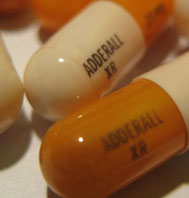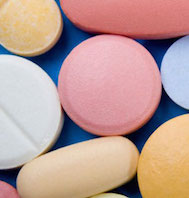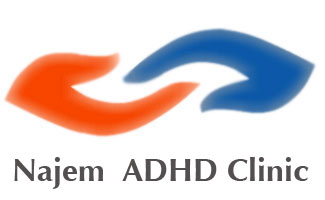Medications for ADD & ADHD
There are two main medication groups for the treatment of ADD and ADHD : Stimulants and Non-stimulants.
Medical treatment depends on a few things. From my perspective, I always want to use the drug which is easiest, cheapest, and works best. It turns out that about half of the children with ADHD have other neuropsychiatric problems. It is the presence or absence of these other problems which can determine which drug I use. Do they have tics? If so, certain drugs work much better. Are there signs of anxiety and depression? This means certain things will work and other will not. The first choice of drugs for ADHD are the stimulants. The other drugs are all second choice and usually reserved for children who do not respond to the stimulant drugs.
Stimulant medications are the most commonly used for the treatment of ADD and ADHD in both adults and children. There are two main pharmacological agents are in this class:
- Methylphenidate
- Amphetamine
- Immediate Release or Short Acting (IR)
- Extended Release or Long Acting (XR)

Vyvanse

Ritalin

Adderall XR

Non-Stimulants
The Stimulants
Methylphenidate (trade names Concerta, Methylin, Ritalin, Quillivant XR) and Amphetamines (Adderall, Adderall XR) had been studied the most for the past 50 years and used in both children and adults since 1960 for ADD and ADHD. The stimulants work by increasing the Dopamine and Norepinephrine levels in the synaptic junctions of the brain. They allow proper transmission of the thought processes in the brain resulting in the improved performance of the prefrontal cortex which is the center of “Executive Function”. Research indicates that the Amphetamines improve the brain’s networking efficiency, improve performance on difficult and boring tasks and improve the working memory. There is improvement of physical stamina, endurance and improved fine motor coordination. Very high doses of these medications can cause adverse side effects of Psychosis impairment of athletic performance. There is abuse potential and has to be used under direct supervision of adults.
-
Which is the best medicine?
- The Amphetamine Salts (Adderall) offers the best price/performance of all the stimulants.
- The choice of medication also depends on the presence of other co-existing psychiatric conditions like Tics, Depression, Anxiety, Oppositional Defiant Disorder, Psychosis or Bipolar disorder.
- Using stimulants in certain Psychiatric conditions can result in severe side effects. In some patients, Amphetamines can cause intolerance or adverse side effects in which case we can try the Methylphenidate group or non-stimulants.
- The Vyvanse (Lisdexamfetamine) is a form of Amphetamine with molecular structure consisting of dextroamphetamine coupled with the essential amino acid L-lysine. It is a pro drug with unique ability to deliver a constant and even drug level in the blood which lasts up to 12 hours with a single dose.
- Many health insurances require that the Adderall and Ritalin should be tried before they allow the usage of the Vyvanse. For more information please visit Vyvanse.
-
Importance of individualized dosing
We need to customize the dosage for each and every patient in the treatment of ADD and ADHD. Some patients require higher doses than others due to the fact that they metabolize the medications faster. Some patients need much lower levels of medication. At the clinic we start all new patients with a very small dosage and gradually increase the medication while monitoring the side effects and the improvement of executive function.
read more... -
Optimal dosing and enhanced intellectual performance
When an optimal dose is administered, patients experience enhanced intellectual performance. Due to improved fine motor coordination, one can experience enhanced performance at various sports. read more...
STIMULANT MEDICATIONS
| Generic Name | Extended Release | Short Acting | |
|---|---|---|---|
| Methylpenidate Hydroichoride |
Concerta Daytrana Patch Metadate Ritalin, Ritalin SR, Ritalin LA |
Methylin Tablet Ritalin Tablet |
|
| Amphetamie | Adderall XR Capsule | Adderall Tablet | |
| Lysdexamphetamine Dimesylate | Vyvanse Capsule | ||
| Dexmethylphenidate | Focalin XR Capsule | Focalin Tablet | |
| Dextroampetamine | Dexedrine Capsule |
Special Populations
Preschool
Generally this group would not be treated with medications. In some circumstances, medications are used in this group if the child's behavior is so disruptive that he or she cannot attend a structured preschool program and cause severe disruptions at home as well. It is important to get children with severe ADHD into preschool as it can be very helpful in building their social skills. When other conditions like OCD (Obsessive Compulsive Disorder), ODD (Oppositional Defiant Disorder) or Bipolar disorder coexist, the household is in constant turmoil. Parents can’t cope up with the disruptive behavior of the child. Sometimes the child's behavior is causing severe impact on spousal relationships or other sibling’s daily routines. Overall, these medications are safe when used judiciously and cautiously in this age group. It is very important to diagnose and treat co-morbid conditions.
Teenagers
The stimulant medications are very effective in this group. The immediate release stimulants need to be given 2 to 3 times a day. Long acting stimulants are very useful but they are very expensive compared to the immediate release medications. It is important to look at the insurance coverage before we use them.
Abuse of stimulants
The ADD/ADHD children have a tendency to get addicted to various drugs. There is a possibility of abuse of the stimulants by adolescents and adults. The parents should keep the medications under lock and key and administer the medications under direct supervision. When teenagers with ADHD are treated with stimulants, they are less likely to end up abusing various recreational drugs than teenagers with ADHD who are not treated. The Clinic does drug screening of all of the adolescent and adult patients to make sure that they are not abusing other narcotic medications and recreational drugs
Side Effects of Stimulants
-
01
Sleep
Insomnia is one of the common side effect of the Stimulants. Sleep deprivation cause irritability, poor concentration, and fatigue leading to poor academic and work performance.Remove TV and electronic gadgets from bedrooms.Avoid TV or computer screens for one hour prior to the sleep time. Soft soothing music and reading a book may be in order. There are certain medications we can use to help with sleep if insomnia becomes a persistent problem.
-
02
Loss of Appetite
Lack of appetite and poor food intake is very common with stimulant medications. After all, these are the same family of drugs used for weight loss. I keep track of the weight of my patients at every single visit. If there is too much weight loss, we may have to lower the stimulant dosage and add a non-stimulant to get the effective therapeutic results.
Aliquam dapibus tincidunt metus. Praesent justo dolor, lobortis quis, lobortis dignissim,
-
03
Rebound
The short acting drugs (Adderall and Ritalin) often can cause “rebound” effect. When the the drug is wearing off the child has exaggerated symptoms of the ADD/ADHD. This can last 2-3 hours. This problem can be solved by giving a very small dose of stimulant medication at 3:30 – 4:00 pm.
